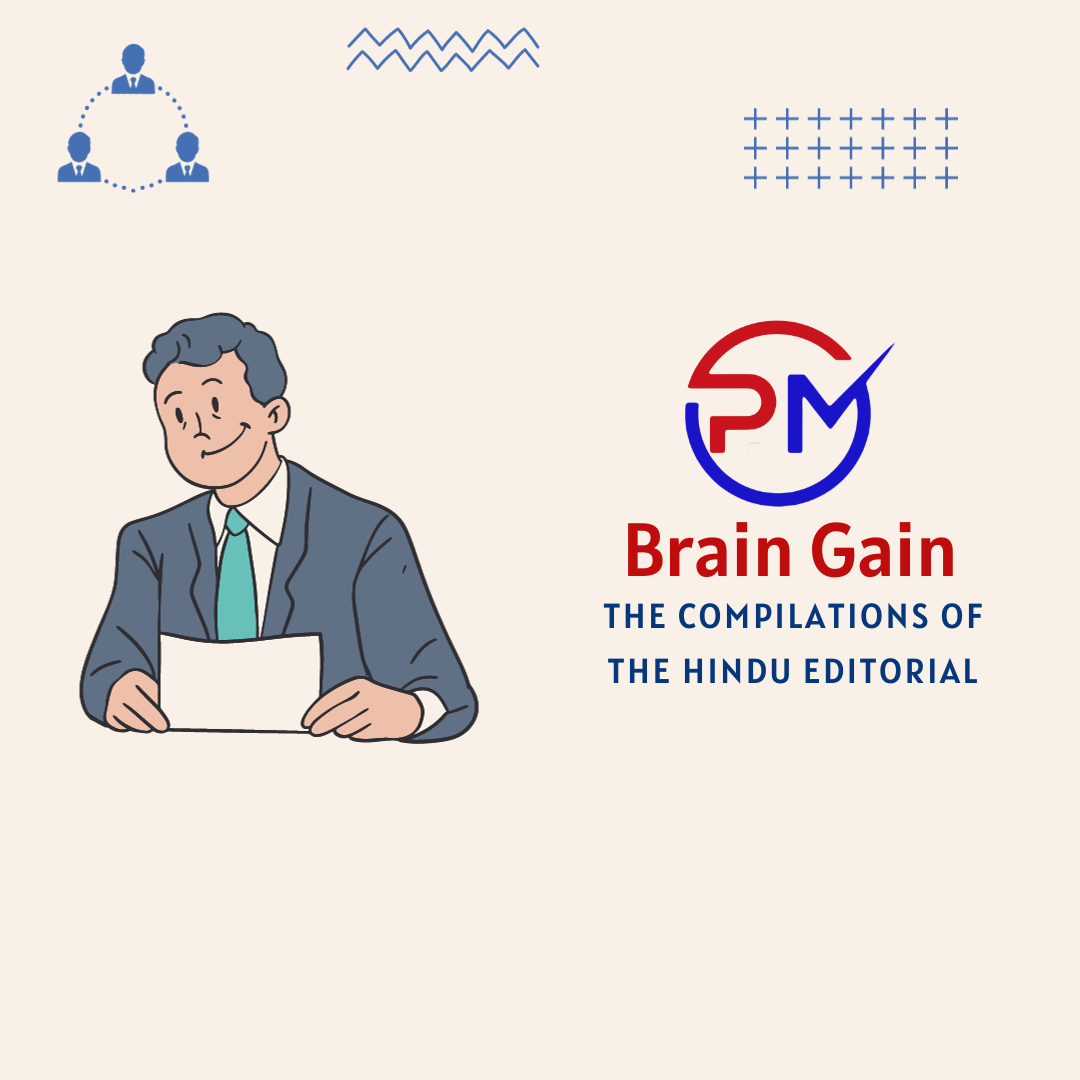Editorial 1 : Where do domesticated silkworm cocoons get their wild colours from?
Introduction
- Silk, the queen of fibres, is drawn or reeled from cocoons of the silk moth (Bombyx mori). Humans domesticatedit more than 5,000 years ago in China, from the wild moth (Bombyx mandarina). India is the world’s second largest producer of raw silk after China.
Silkworms
- Caterpillars, also known as silkworms, of both these species feed exclusively on leaves of mulberry plants (genus Morus).
- The domesticated moth-is much larger than its wild progenitor, and thus extrudes a longer silk fibre to build its larger cocoon, up to 900 metres long.
- But it depends wholly on human care for its survival and reproduction.
- Since having been domesticated, it has lost the ability to fly, and since its need for camouflage no longer exists, it has also lost its caterpillar and adult-stage pigmentation.
Carotenoids and flavonoids
- ‘Wild’ silks – which include the muga, tasar, and eri silks – are obtained from other moth species: namely, Antheraea assama, Antheraea mylitta, and Samia cynthia ricini.
- These moths survive relatively independently of human care, and their caterpillars forage on a wider variety of trees.
- Non-mulberry silks comprise about 30% of-all silk produced in India.
- These silks have shorter, coarser, and harder threads compared to the long, fine, and smooth threads of the mulberry silks.
- The ancestral mulberry moth makes brown-yellow cocoons. In contrast, domesticated silk moth cocoons come in an eye-catching palette of yellow-red, gold, flesh, pink, pale green, deep green or white.
- Human handlers selected the differently coloured cocoons whenever they emerged, possibly in the hope of breeding for coloured silks.
- We know today that the cocoon’s pigments are derived from chemical compounds called carotenoids and flavonoids, which are made by the mulberry leaves.
- Silkworms feed voraciously on the leaves, absorb the chemicals in their midgut, transport them via the hemolymph – arthropods’ analogue of blood – to the silk glands, where they are taken up and bound to the silk protein.
- Mature caterpillars then spin out the silk proteins and associated pigment into a single fibre. The caterpillar wraps the fibre around itself to build the cocoon.
Mutant strains
- The adult moth hatches from the cocoon. In this process, the fibre is broken in many places.
- Superior quality silk however comes from an unbroken fibre, so unhatched cocoons are used for reeling.
- The differently coloured cocoons arise from mutations in genes responsible for the uptake, transport, and modification of carotenoids and flavonoids.
- The mutant strains have become a valuable resource for scientists to study the molecular basis of how, in a relatively short span of 5,000 years, artificial selection generated such spectacular diversity.
The gene called apontic-like
- Domesticated and ancestral mulberry silk moths can be interbred to produce hybrid offspring.
- The hybrid caterpillars, like their wild parent, made the pigment called melanin.
- But when the B. mandarina-derived copy of apontic-like was mutated, the hybrid failed to make melanin.
- Both versions of the apontic-like gene make the same protein. Therefore, the difference between them was attributable to differences in sequences that regulate when and where the gene was turned ‘on’ or ‘off’.
Conclusion
- Silk is an acme of domestication, comparable in its success to basmati rice, alphonso mangoes, and the golden retriever. Today, the tools are at hand for scientists to make and compare genetically identical hybrid silk moths that differ only in which of a gene’s two parental versions is inactivated: domesticated or ancestral.
- This paves the way for scientists to work out – gene by gene – all the key steps that led to silk moth domestication. Hopefully, someday soon, similar techniques will become available for us to analyse domestication in rice, mangoes, and dogs.
- Editorial 2 : Understanding the fundamentals of how electricity is transmitted
Introduction
- Energy exists in many forms, like light, sound, heat, etc., power and power transmission also exist in many forms. However, electric power transmission is more complicated because of the multiple phases of electric current, and factors like voltage, impedance, frequency, etc.
Power supply
- Any power supply system has three broad components: generation, transmission, and distribution.
- Electricity is generated at power plants as well as at smaller renewable-energy installations.
- Then it is transmitted using a distributed network of stations, substations, switches, overhead and underground cables, and transformers, among other elements.
- Finally, it is distributed to consumers in a standardised way, befitting the needs of various machines and applications.
Basics of transmitting electricity
- First, in any conductor that transports electric current, the transmission efficiency is higher at lower current and higher voltage.
- This is because the energy loss during transmission increases as the square of the current, whereas the amount of voltage increase corresponds on a 1:1 basis with the amount of current decreased.
- That is, if voltage is increased by five units, the amount of current will drop by five units, but the amount of energy lost will be reduced by 25 units.
- This is the purpose of transformers: they increase the voltage and reduce the current before feeding into transmission lines, and the reverse when receiving current to be supplied to consumers.
- Second, the cables that move the current still have some resistance, which results in some energy loss.
- The amount of loss can be controlled by adjusting the cable’s thickness: the thicker it is, the less energy is lost, but the cost increases. So when the cost of the cable’s material is high, the cables are thinner.
- Third, the longer the distance of transmission, the lower the transmission cost.
- All these factors are further complicated by the use of alternating current (AC).
- AC can be modified more easily in transformers than direct currents (DC) and also has higher transmission efficiency.
- But when the AC frequency is higher, the amount of resistance the current encounters in the material increases.
- Engineers model all these factors for a given network to understand how much electrical energy will be lost between generation and consumption.
Power transmission
- In a three-phase AC circuit, each wire transmits an AC current in a different phase.
- From a power station, the wires are routed to transformers that step-up their voltage.
- Then, they are suspended from transmission towers, which must be stable and properly wired, as they travel long distances.
- Insulators in contact with the wires draw away some current if there is a surge in the line; circuit-breakers ‘break’ the circuit if there is too much.
- The towers are also grounded and equipped with arresters that prevent sudden increases in voltage — such as due to a lightning strike — from affecting the wires.
- Similarly, dampers prevent vibrations in the wires from affecting the towers’ stability. Switches are used to control the availability of current and to move currents between different lines.
Operation of grids
- As mentioned earlier, transmission is situated between production and distribution.
- A national grid includes all three components, and as a result transmission also has to account for the particulars of power production at different types of sources, at various locations, and how and where that power is consumed.
- For example, some sources — like coal-fired or nuclear reactors — can produce energy continuously, whereas renewable energy sources are intermittent.
- So grids also have storage facilities that store electrical energy when there’s a surplus supply and release it in times of deficit.
- Grids also need to respond to failure in different parts of the network and prevent them from carrying over to other parts, adjust voltages in response to demand, control the AC frequency, improve the power factor etc.
Conclusion
- A grid becomes a wide-area synchronous grid if all the generators connected to it are producing an AC current at the same frequency. India’s national grid is also a wide-area synchronous grid. Such grids result in lower power cost but also require measures to prevent cascading power-supply failures.


